Art Fairs
Zona Maco Brings New Life to Latin American Art
The fair goes beyond easy classifications in its 14th year.
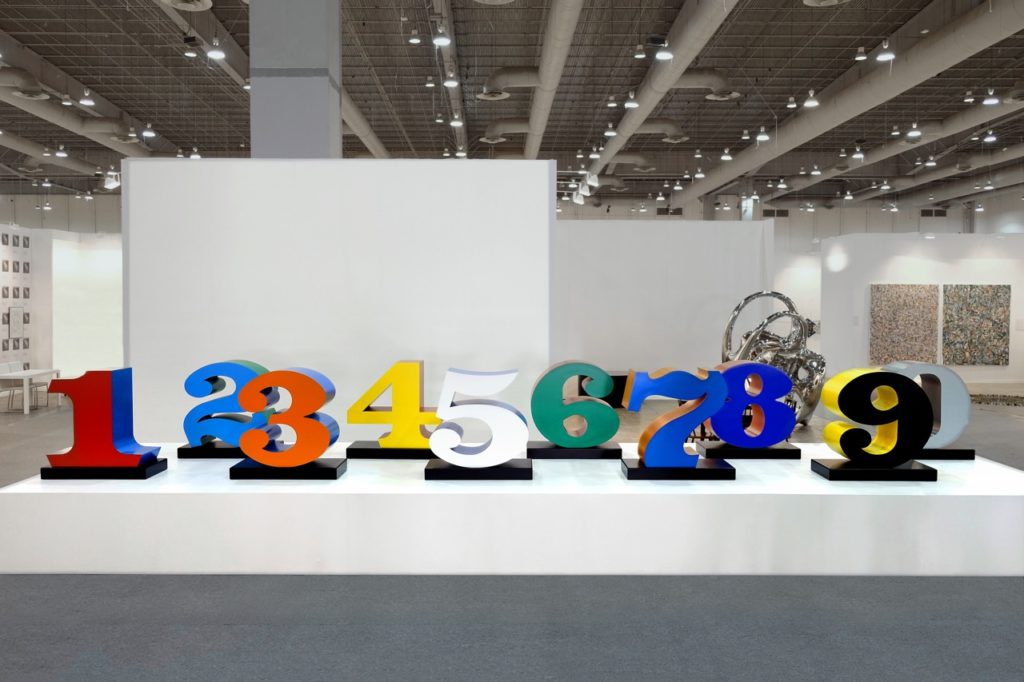
The fair goes beyond easy classifications in its 14th year.

Tom Smith

Zona Maco, billed as “Latin America’s Most Important Contemporary Art Fair,” goes beyond easy classifications in its 14th year.
Exhibitors and visitors with far-reaching memories may recall, as Bellatrix Hubert from David Zwirner does, how small-scale the first edition was. “It’s became an important fair so fast, but that’s not surprising seeing as there’s a great community here,” she told us.
The Modern Art section of the Mexico City-based fair ensures that a high number of North and Latin American masters can be seen, perhaps doing the opposite of what so many contemporary dealers are avoiding—what gallerist Sean Kelly calls “taking coals to Newcastle”—giving people what they already have.
Strategies for a successful fair vary among exhibitors—in the main section, 20 of the 78 galleries hail from Mexico—and although many international booths might not be showing local artists, gallerist Kurt Beers explains, “color is more vibrant here than you would show to a conservative Italian, Basel or New York audience.” Not so much coals as what might resonate, then, with the crowd gathering in Centro Banomex this week.
Dealer after dealer at the fair insisted that their first criterion is quality. It should come as little surprise, then, that many gallerists had secured sales or reservations in the opening hours.
Although Cecilia Leon de Barra, the curator of the Design section, felt this edition was “more laid back” than previous years, this didn’t seem to translate into less interest from collectors. The peso may be slightly lower these days, but that hasn’t affected art prices, at least not yet. And, as gallerist Gary Nader pointed out, “you can ask if it’s better to buy at 32 pesos or 22 pesos to the dollar, but everyone knows it’s best to buy now.”
In fact, no one seemed particularly interested in Donald Trump’s proposals against Mexico. The only president in the room was a 1996 double portrait of JFK, dressed as John and Jackie O, by John Currin.
Below are the galleries that caught our eye this year.

Paul Kasmin at Zona Maco. Courtesy of the gallery.
Paul Kasmin, New York
For Paul Kasmin, the strategy is always, Nicholas Olney says, “to bring the best things wherever we go.”
A typically thick painting by Mexican Bosco Sodi, whom they have recently started representing, is on offer for $95,000. But the stars of their booth are Robert Indiana’s hard-edged painting series Numbers 1-9, and a room with Brancusi, Copley and Ernst, who once all had neighboring studios in Paris. Their price range is $50,000-5 million.
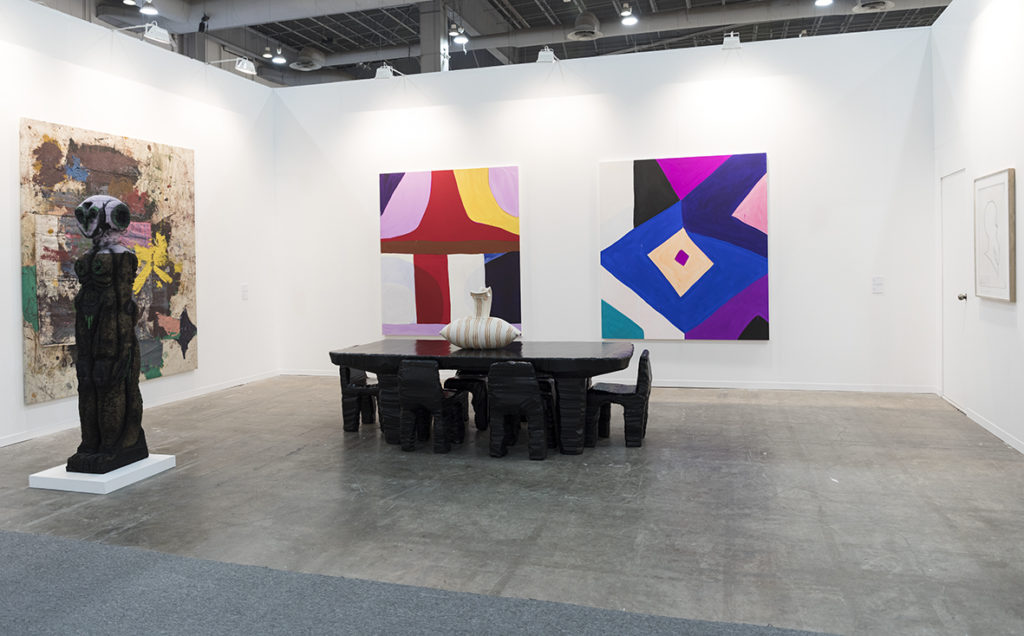
Salon 94 at Zona Maco. Courtesy of the gallery.
Salon 94, New York
The fondness gallerists reveal for Maco is tangible, and Salon 94 is no exception. Whenever they take a break from Mexico, they are keen to come back. And they’ve brought some arresting work, from artist Huma Bhabha, who was at the 2015 Venice Biennale and whose work is in Mexico for the first time, to Salon 94’s new client Marina Adams, a painter in her 50s who is just being discovered.
The booth also includes work by Ibrahim El-Salahi (of Tate Modern retrospective fame) and the Australian aboriginal Tjapaltjarri siblings. The artwork sells from reasonable up to the million-dollar mark, a wise spread in what director Alissa Friedman calls a “second-look kind of fair.”
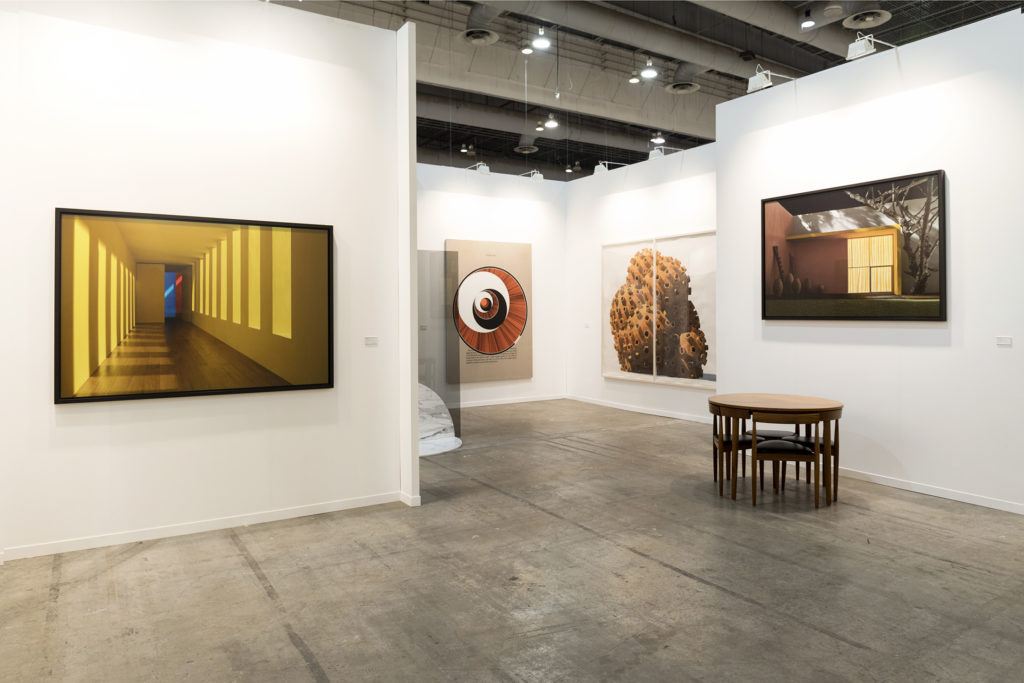
Sean Kelly at Zona Maco. Courtesy of the gallery.
Sean Kelly, New York
The affable New York gallerist is here for the first time, and feels “that it was the right moment.” He continued, “It is totally appropriate now to reach across the wall when that idiot doesn’t want to,” he said, referring to President Trump’s decision to build a barrier on the border with Mexico.
Sales were solid during the opening day of the fair. A $40,000 piece by Hugo McCloud was the first work to sell, but others are likely soon to come.
Depending on what direction you look in Kelly’s booth, you see figuration, such as works by Antony Gormley and Marina Abramovic, or abstraction, with Los Carpinteros, Jose Dávila or Sam Moyer. Like Lisson gallery, Kelly has a work by James Casebere, which looks like a photograph in a Barragán house, but is in fact taken in an artist-made model, which adds a playful touch to the work on view.
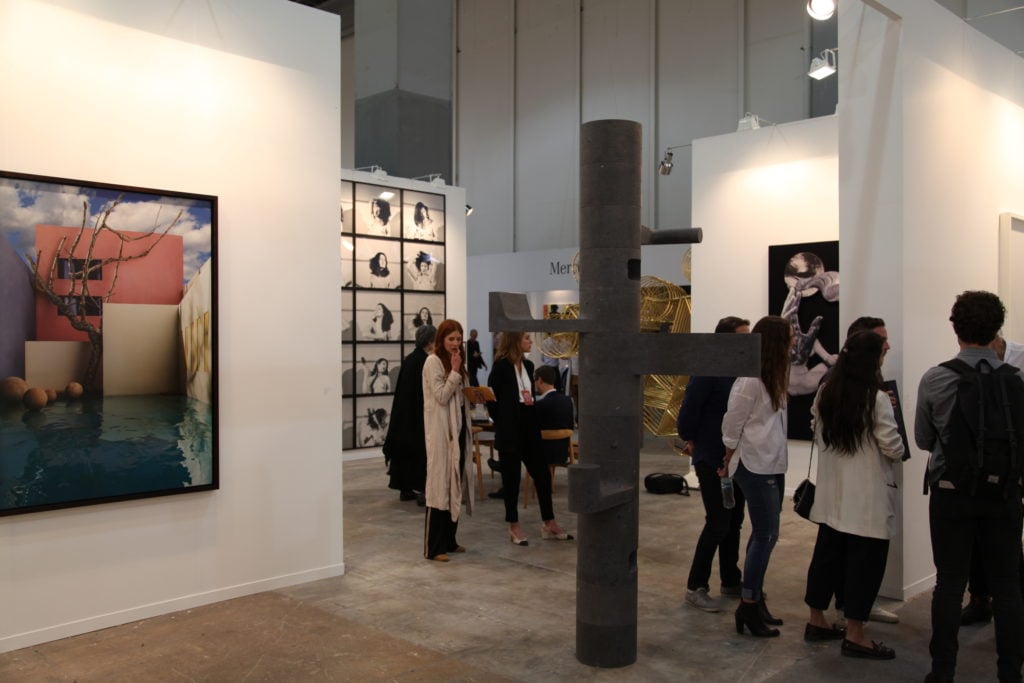
Lisson Gallery at Zona Maco. Courtesy of Tom Smith.
Lisson Gallery, London, Milan, New York
Alex Logsdail has taken a few minutes out from a whirl of visitors, yet he sees sales here as “prolonged, that move gradually, not all at once.” At the top of the dealer’s list of works he has brought here are Pedro Reyes’ Totem (Tower 2), a bicycle sculpture by Ai Weiwei, and Marina Abramovic’s Art Must Be Beautiful, Artist Must Be Beautiful.
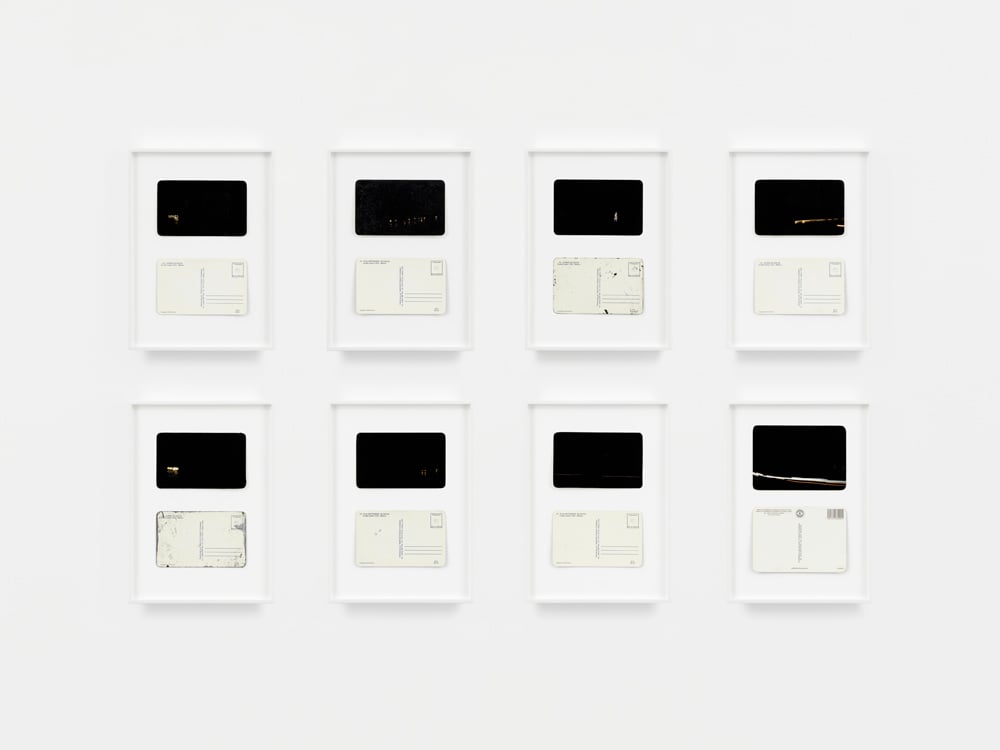
Francis Alÿs at David Zwirner’s booth. Courtesy of the gallery.
David Zwirner, New York, London
Gallery director Bellatrix Hubert recalls that the first Zona Maco was “in a garage” and that David Zwirner has been there from the start. The community, she judges, has “everything you need: collectors, institutions and galleries”. The gallery is showing recent work by Francis Alÿs, such as his $180,000 painting of Mexican women washing in a river and his postcards from Ciudad Juárez.
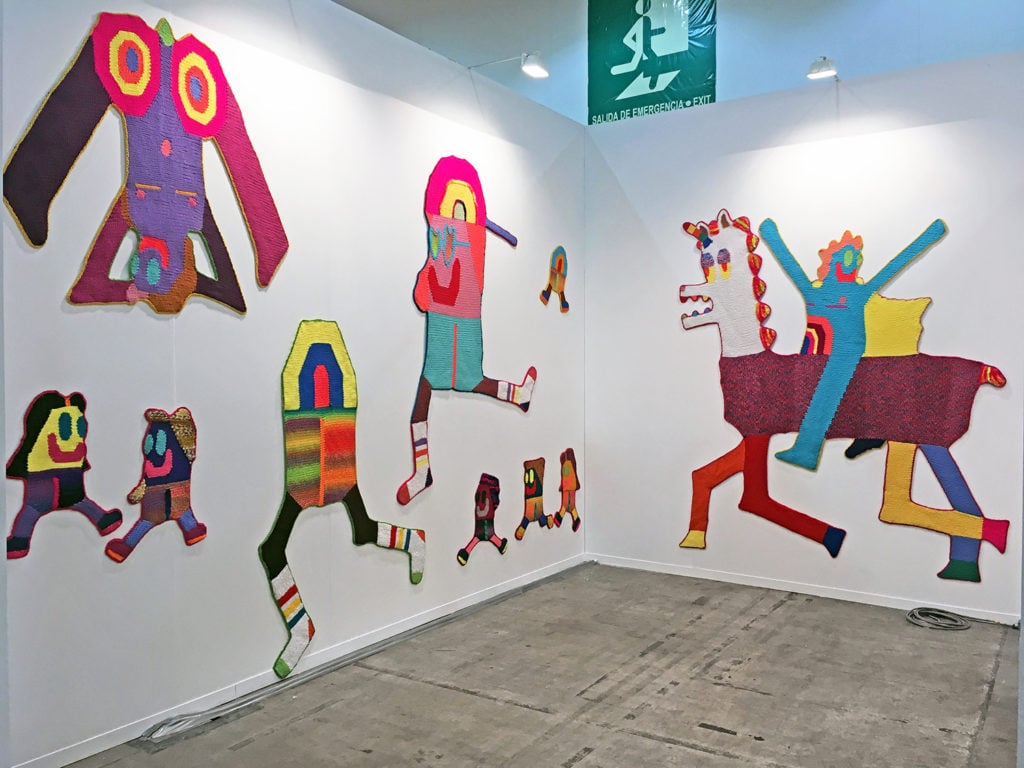
Luis De Jesus at Zona Maco. Courtesy of Luis De Jesus, Los Angeles.
Luis De Jesus, Los Angeles
For his second time in the New Proposals section, the gallerist believes that it is “necessary to return to fairs” he says.
This time he brought work by Caroline Wells Chandler and Josh Reames. Sales began earlier than last year, which he puts down to “adjusting what you’re going to bring; you’re always finessing.”
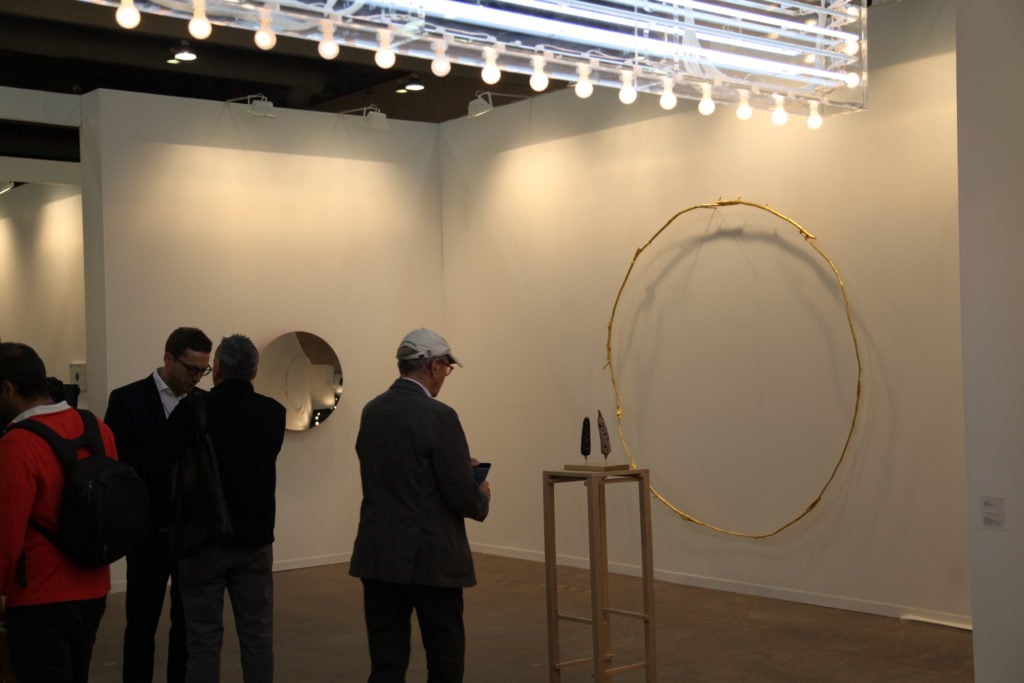
Gladstone at Zona Maco. Courtesy of Tom Smith.
Gladstone Gallery, New York, Brussels
With a sculpture by Ugo Rondinone, mirror dishes by Anish Kapoor, and work by Damien Ortega, Gladstone is banking on sculpture and conceptual works at the fair.
Aaron Baldinger hopes that Ortega’s ceramic corn, combining the artist’s fondness for ceramics with computer-like coding, will do well here. Baldinger notes that sales are slower here than in Basel, but that there is interest and excitement only a few hours after the fair opened. Having a light installation by Philippe Pareno may help bring in the crowds, after all.
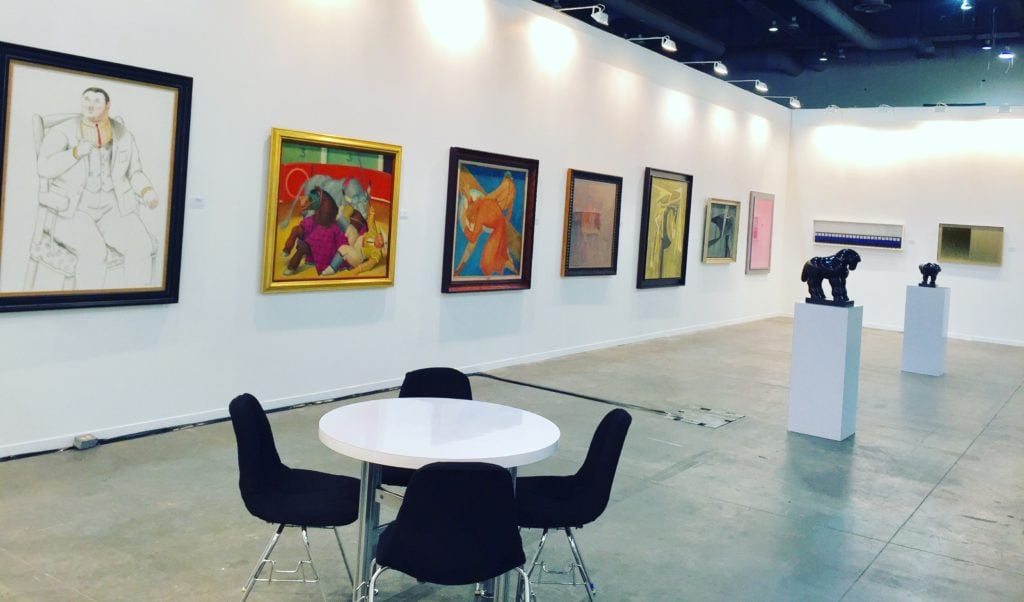
Gary Nader at Zona Maco. Courtesy of the gallery.
Gary Nader, Miami
Gary Nader may not be the only one selling Fernando Botero works in the Modern Art Section, but he has the biggest collection in the world. In fact, he has the biggest collection of Latin American masters, thanks to buying his first work at an early age.
Last year he sold a Tamayo, a Botero and a Riviera. And this year, despite the decline of the peso, he knows he is on to a winner, not least because Botero has stopped making sculptures given his bad back. Nader isn’t worried about profits—he knows he will sell his Leonora Carrington and his Lams, and he knows that the masters will keep increasing in value, and they were in every major museum last year. His only concern is replacing them. That’s why he continues to buy at auctions; they will be more expensive, but in return they are often older and of better quality.
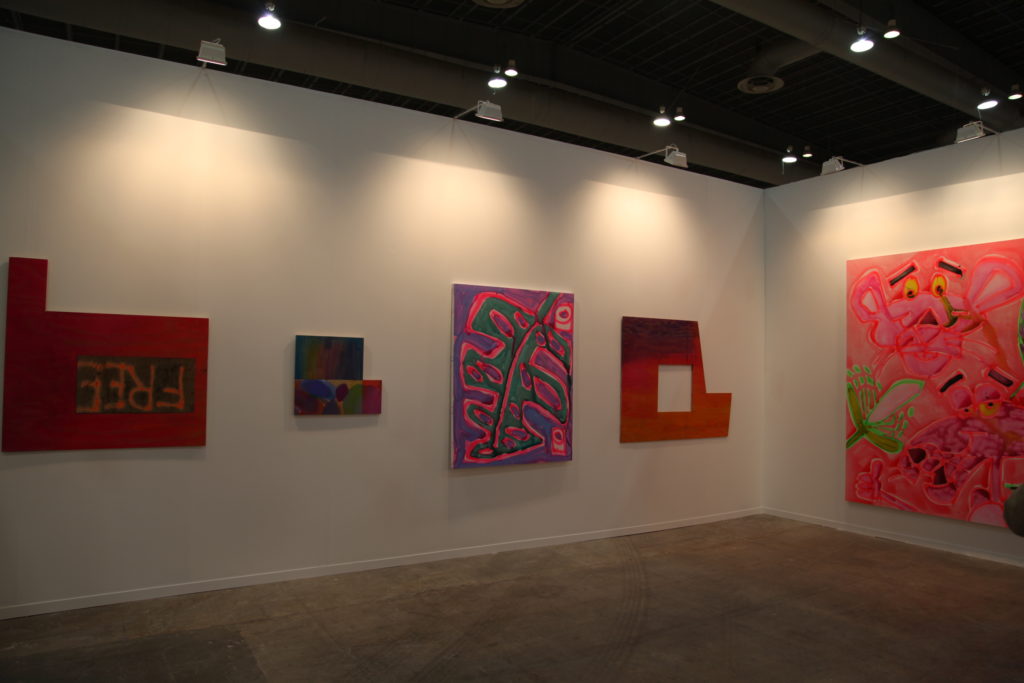
Venus at Zona Maco. Courtesy of Tom Smith.
Venus Over Manhattan, New York, LA
For Anna Christina Furney from Venus, the advantage of Maco is that it brings together an array of artwork and influences.
Visitors were snapping up framed works on paper valued at $5,500 in the early hours of the fair. Their booth is one of the brightest, with new paintings by Katherine Bernhardt and Sarah Braman, two New Yorkers who have forthcoming shows at Fortworth and in Boston, respectively.
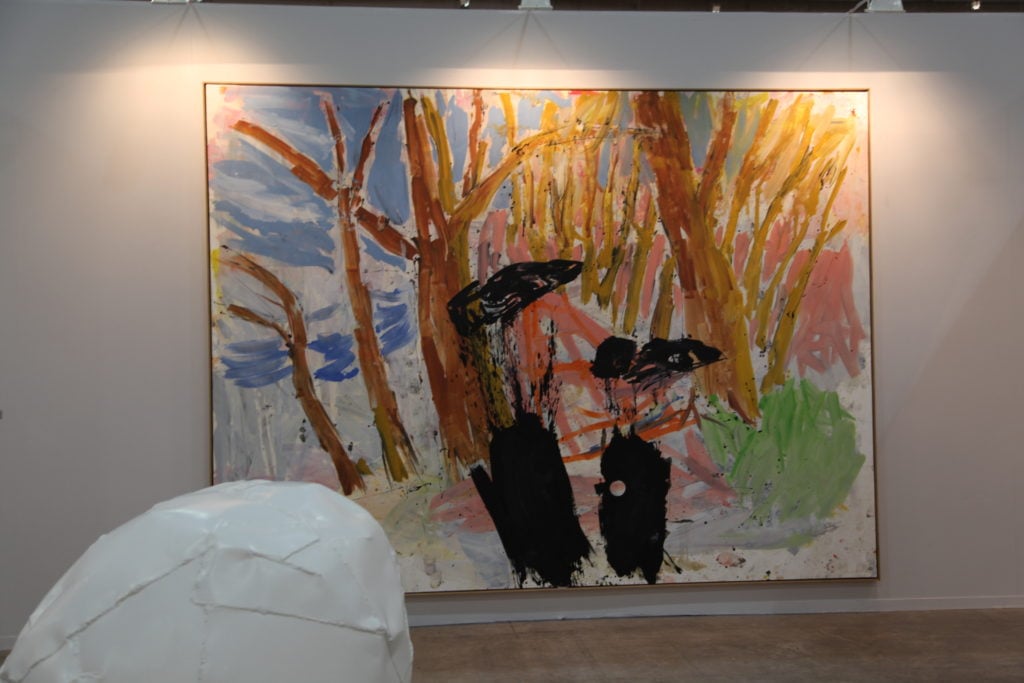
Andre Viana. Courtesy of Tom Smith.
André Viana, New York
Maco is the gallery’s first fair, ever, and their second will be SP-Arte in April. André Viana, who hails from Portugal, has Latin America firmly in his sights. Knowing the director of Maco, Zélika Garcia, also helped him make the decision to start here.
The booth features a $750,000 Baselitz Remix painting from 2006, “probably the most important remix painting he’s ever done”, Viana said. If that fails, certainly John Currin’s 1996 painting The Kennedys will help him make friends here.
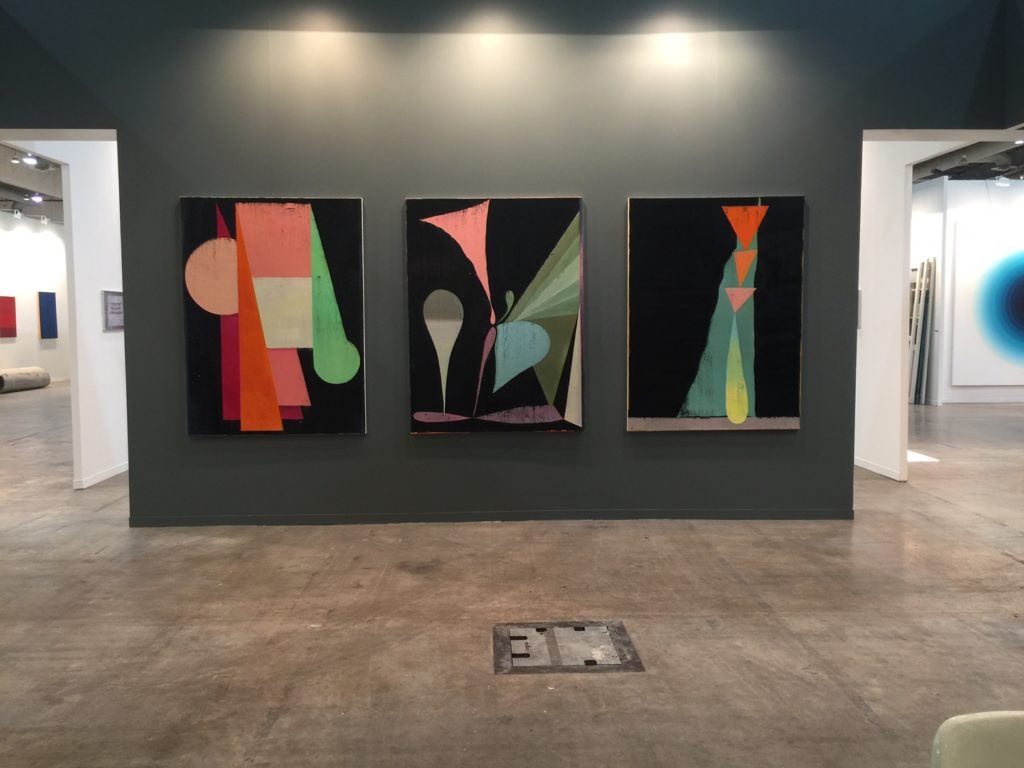
Beers London, at Zona Maco. Courtesy of Tom Smith.
Beers London
In a departure from the fixation on Western Europe, Kurt Beers is featuring work by Genti Korini, an Albanian artist who lives in Bucharest. His paintings are inspired by Communist-era cheer ups in paint, precursors to favela projects and playground color schemes of today. Once again, another booth brings a powerful color palette to Mexico City, which should go over well with the locals.